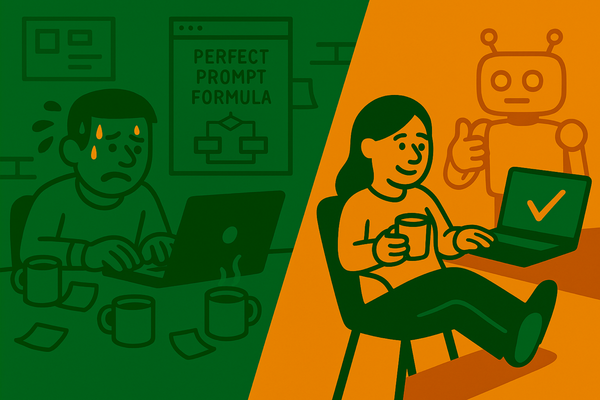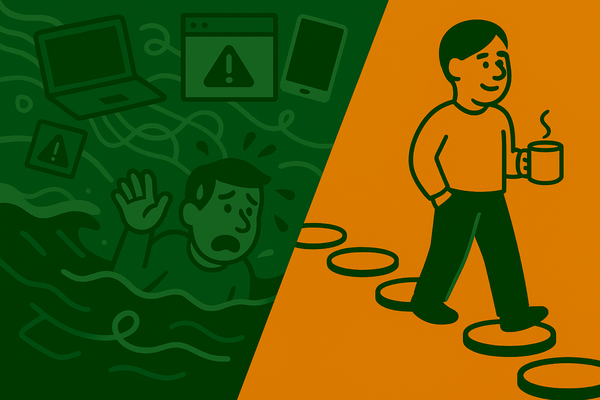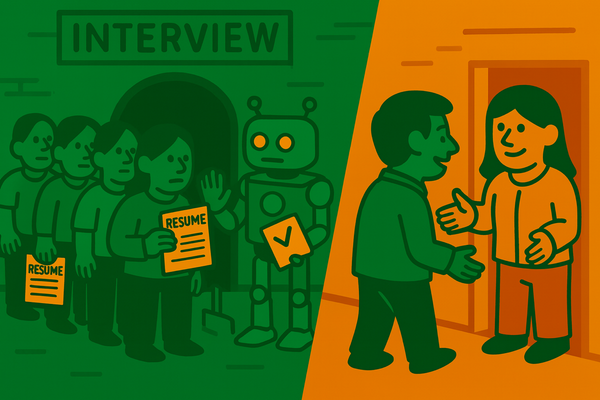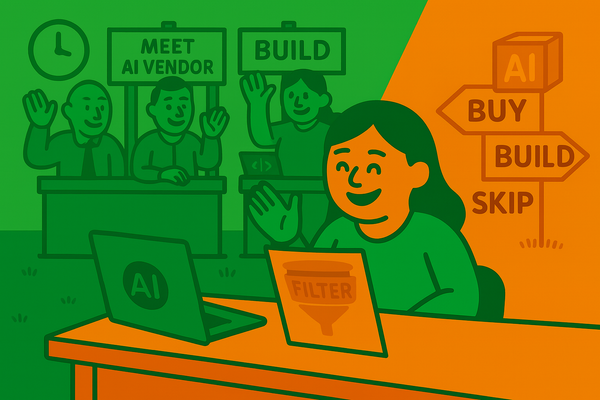[#1] Where You Stand and Where Leadership Expects You to Be | Your AI Advantage Weekly
Clarity, strategy, and tools to turn AI into your career advantage.
![[#1] Where You Stand and Where Leadership Expects You to Be | Your AI Advantage Weekly](/content/images/size/w1200/2025/05/Dq5pU--1--2.png)
Just the Signals
This week’s updates show both rising corporate AI expectations and signals of where the tech is headed next.
- More U.S. companies are paying for ChatGPT → Paid OpenAI usage jumped from 19% in January to % in April. Corporate AI adoption is operational and accelerating (link).
- Klarna’s CEO says AI cut their workforce by 40% → This is what AI-driven restructuring looks like in practice. Expect more teams to shrink quietly as AI fills the gap (link).
- The U.S. Copyright Office head was fired after questioning how AI uses copyrighted content → They released a report warning that training on large amounts of creative work may go beyond fair use. The fight over AI training is political and could shape future tools (link).
- Google is embedding AI across Android devices → As AI becomes ambient, users will expect faster, more personalized experiences everywhere. For workers, this raises the bar: UX, support, and marketing strategies will need to adapt across touchpoints (link).
- OpenAI plans to release an open-source model this summer → Could unlock faster innovation and experimentation inside companies. Non-tech teams may soon get access to lighter, customizable models (link).
Your Advantage This Week
Many people “learning AI,” don’t actually know where they sit on the adoption curve or what to focus on to stand out.
The below self-assessment framework breaks AI adoption at work into 3 clear stages:
- AI as a Tool — You’re experimenting and learning the basics
- AI as a Collaborator — You’re integrating AI into workflows
- AI as a Business Driver — You’re thinking strategically and system-wide
Plus a bonus layer: AI as a Competitive Mindset — where you've moved beyond using AI and started guiding others with its adoption.
When you know your stage, you can stop second-guessing yourself and start taking focused action. You’ll also know how to talk about your progress with your team, manager, or clients.
Complete the self-assessment below and then pick one specific action that helps you move towards the next stage.
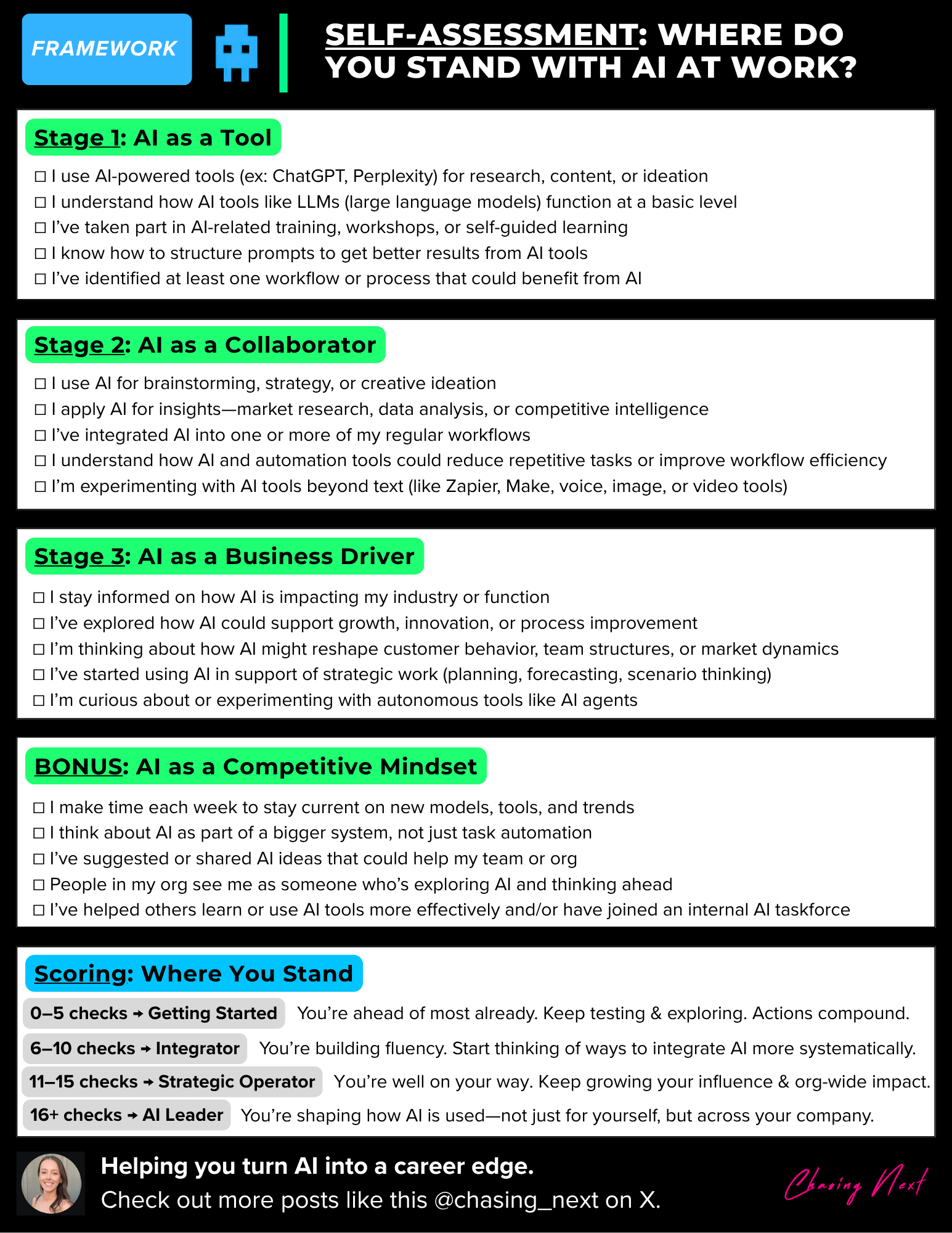
Trend to Watch
More CEOs are going public about what they expect from employees when it comes to AI.
In internal emails and shareholder letters, leaders at Shopify, Duolingo, Amazon, and Fiverr are making AI adoption a formal part of how performance is measured and decisions are made.
I heard this internal memo of mine is being leaked right now, so here it is: pic.twitter.com/Qn12DY7TFF
— tobi lutke (@tobi) April 7, 2025
- Shopify’s CEO said using AI effectively is now a fundamental expectation for all employees, and that teams must justify headcount requests by proving AI can’t do the job.
- Duolingo’s CEO said AI use will be part of performance reviews and hiring criteria, and teams must automate more of their work before getting new headcount.
- Amazon’s CEO outlined how AI is reshaping customer experience, productivity, and cost structures, , signaling a full operational shift.
- Fiverr’s CEO was blunt: “AI is coming for your jobs.” And what used to be hard tasks will soon be the new easy.
AI expectations are no longer implied; they will be written into strategy, hiring, and resourcing. AI is becoming a baseline skill, and employees who wait for formal training will be at a disadvantage.
One More Thing
Stop rewriting the same prompt every day.
If there’s one prompt you use often—like for advice, writing, or ideation—don’t rely on memory or old chats.
Here’s how to save your go-to prompts for easy reuse with the ChatGPT Projects feature:
- Open ChatGPT
- Locate the "Projects" section in menu on the left
- Click the plus sign to create a new project
- Name it something relevant
- Paste your go-to prompt into the instructions
- Done. Your prompt stays pinned, and related chats stay grouped.
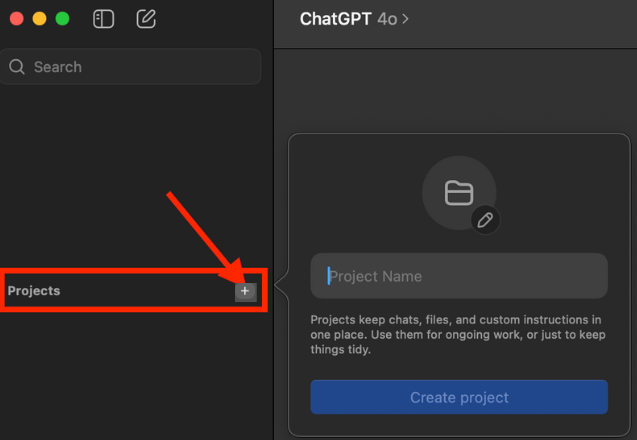
Save time by easily accessing your favorite prompts. Plus, get better results by starting a clean chat for each task, so responses stay focused and aren’t bogged down by old context or extra info.
That’s it for this week. If something helped, forward it to a teammate who’s figuring out AI too.


